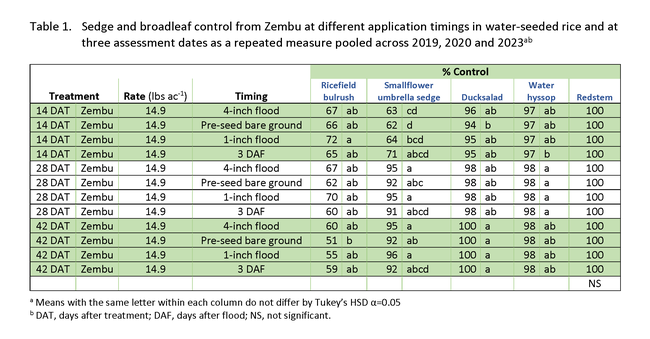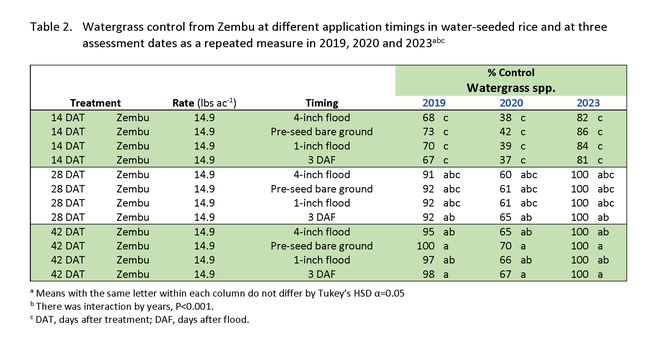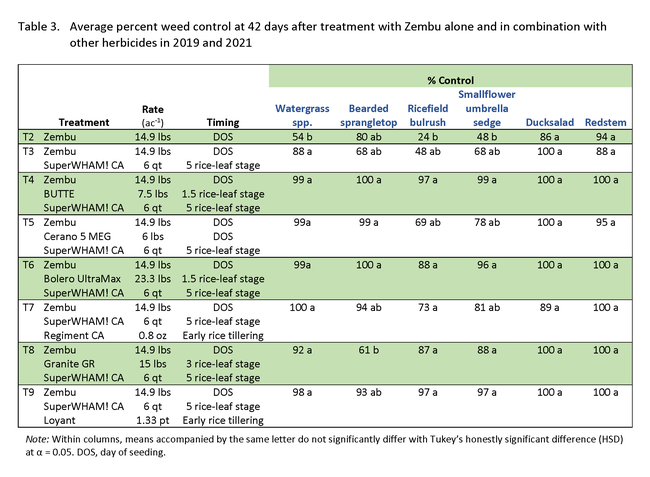A new herbicide for early-season weed control in water-seeded rice will be available soon. The herbicide active ingredient (a.i.) is pyraclonil, which will be trademarked as Zembu™ (1.8% a.i.) by Nichino, America Inc. The mode of action is a protox porphyrinogen (PPO)-inhibitor or Group 14. This herbicide is formulated as a granule and will be used as a residual preemergence for application on the day of seeding onto flooded fields. The use rate is 14.9 lbs ac-1 applied by air. While this herbicide is not a new mode of action for water-seeded rice, it is a new mode of action for early-season residual weed control. Pyraclonil is widely used for weed control in paddy fields worldwide and is the most commonly utilized herbicide in Japan [1]; however, Zembu™ will be the debut of pyraclonil to the U.S. rice market [2].
In order to evaluate Zembu's strengths and weaknesses, UC researchers, in collaboration with Nichino, America, has conducted extensive research on Zembu since 2015 and developed foundational information for the use of Zembu in California water-seeded rice. In this post we highlight two studies which demonstrate Zembu's use and how it can be incorporated in an herbicide program for season-long weed control.
Zembu Timing
In the study conducted at the Rice Experiment Station in Biggs, CA in 2019, 2020 and 2023, Zembu application timings were evaluated. The pre-seed bare ground was the first Zembu application at 3 days before flooding the field and seeding rice, then the application at 1-inch flood, then the application at 4-inch flood, followed by the application 3 days after flooding (DAF). The rice was seeded after the 1-inch flood and before the 4-inch flood. 'M-209' rice was seeded in 2019 and 2020 at 120 lbs ac-1 and 'M-209' was seeded in 2023 at 150 lbs ac-1. The objective of studying the different application timings was to determine if the application timing will affect weed control and rice response.
Cross species weed control was not affected by the different application timings of Zembu (Table 1). Zembu does not have great activity on ricefield bulrush and changing the application timing did not improve its control, which reached only 60% by 42 days after treatment (DAT) (Table 1). Zembu provided excellent control of smallflower umbrella sedge and all present broadleaves, which included ducksalad, water hyssop and redstem (Table 1). Across years, there were differences in control levels for watergrass control; however, there were no observed differences in watergrass control across the application timings (Table 2). In 2020, where watergrass control levels were low, was a year when the whole field had an increased pressure of watergrass caused by late rains immediately before the field preparation and initial flood, which provided soil moisture to give the grasses a head start. In 2019 and 2023, all weeds and rice germinations were initiated at time of flooding and led to greater control of watergrass (Table 2). The Zembu label will note that watergrass is suppressed by the chemical, not controlled. When applicators use Zembu for herbicide control, the incorporation of other herbicides to control ricefield bulrush and watergrass populations will be important.
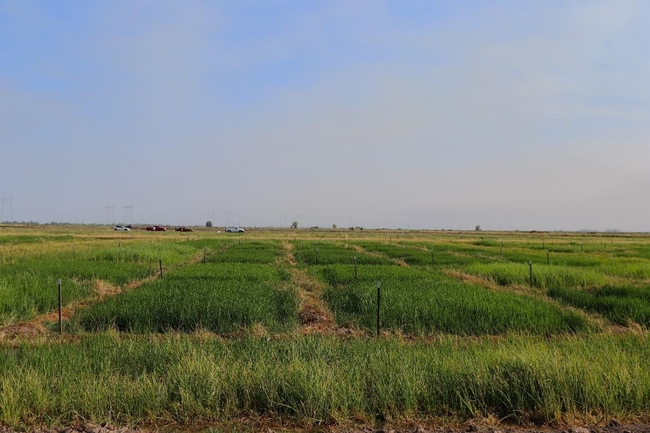
Zembu in Herbicide Programs
Zembu will need to be incorporated into herbicide programs for season-long control. In the study conducted in 2019 and 2021 at the Rice Experiment Station in Biggs, CA, herbicide programs that included Zembu were evaluated for weed control and rice response. ‘M-206' rice was seeded at 120 lbs ac-1 and 150 lbs ac-1 in 2019 and 2021, respectively. All Zembu applications were done at day of seeding (DOS) onto the 4-inch flood. All other herbicides were applied following their label (Table 3).
When accompanied and followed by other herbicides, Zembu is a great addition to achieve season-long weed control (Table 3). In this study, it is observed that Zembu alone did not control the watergrass and when followed by various other herbicides the control level was increased (Table 3). Similar with ricefield bulrush control, other herbicide combinations increased the control levels when compared to Zembu applied alone (Table 3).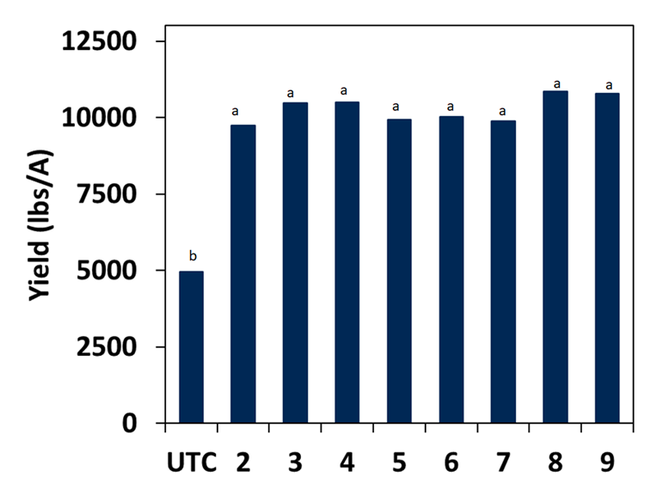
Rice response was minimal across treatments except with the Zembu and Bolero Ultramax combinations, which demonstrated greater visual injury early on. However, injury was overcome later in the season and rice grain yield did not differ across treatments (Figure 1).
Zembu will be a great addition to the herbicides available for early-season weed control in water-seeded rice.
References
[1]. Zhang YB (2014) Development and application of pyraclonil in paddy field. World Pestic 36(6):1-3
[2]. Anonymous (2023) Zembu™ Herbicide. Nichino America, Inc. Accessed on January 14, 2024 from https://nichino.net/products/zembu-herbicide/
